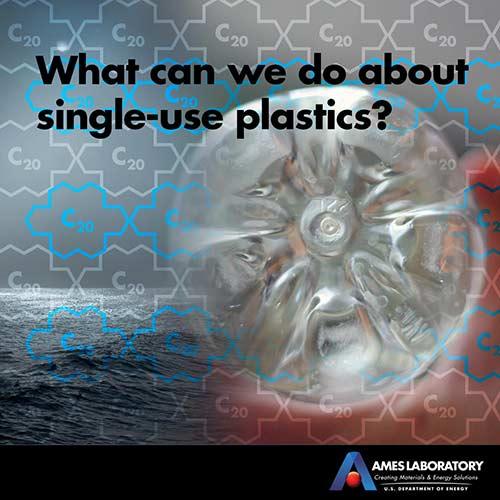 Much of the growing global concern about the plastics polluting our oceans and clogging our landfills has focused on reducing consumption and reusing where we can. But there’s a reason manufacturers and consumers struggle to substitute other materials-- for many uses, plastics are simply the best material available. When it comes to keeping our food and drugs clean and uncontaminated and our medical procedures reliably sterile and safe, the one-use-only disposability of plastics has been essential to our health.
Much of the growing global concern about the plastics polluting our oceans and clogging our landfills has focused on reducing consumption and reusing where we can. But there’s a reason manufacturers and consumers struggle to substitute other materials-- for many uses, plastics are simply the best material available. When it comes to keeping our food and drugs clean and uncontaminated and our medical procedures reliably sterile and safe, the one-use-only disposability of plastics has been essential to our health.
So while it’s one thing to stop buying bottled water, a whole host of other critical plastic uses-- from the polypropylene syringes in your doctor’s office to the polystyrene packaging around your chicken at the grocery store, probably aren’t going away any time soon.
“We certainly can and should be doing the things we can to reduce our consumption of some uses, but for others, we really can’t,” said Aaron Sadow, a scientist in the Division of Chemical and Biological Sciences at Ames Laboratory. “Not using plastic drinking straws is possible, but not using plastics in food packaging and medical devices is difficult and in some cases likely impossible, so we’re kind of stuck. The question is, what do we do with this waste?”
Unlike recycling of less-complex materials like aluminum or glass, plastic is a “down-cycle” material, meaning that the processes used to clean and re-form it into new raw material degrades the quality of it.
“With polymers, what holds them together are carbon-carbon bonds or carbon-other element bonds,” said Sadow. “When they’re heated and melted for recycling, the carbon-carbon bonds break, typically degrading the material’s properties. That’s not okay for the performance requirements of food, drug, and medical packaging and supplies. The recycling process adds cost, and then you can only do that down-cycle so many times before you end up with material of no practical value. So, it’s not really ever been economically feasible to recycle these plastics.”
In an effort to change that, Sadow and colleagues at Ames Laboratory are teaming up with researchers at Argonne National Laboratory, UC Santa Barbara, University of South Carolina, Cornell University, and Northwestern University in an effort funded by the U.S. Department of Energy’s Office of Science to upcycle single-use plastics into more valuable chemicals that make recovery worthwhile.
The inorganic chemistry challenge is finding a method to chemically “chop” long polymer chains into smaller pieces that can then be used to extract purified and new raw materials for the chemical industry, to produce things like nylon, fibers, coatings, and detergents.
“Right now, we just don’t have that kind of control over the process. But nature does,” said Sadow. “Our inspiration is the enzymatically-controlled hydrolysis of cellulose, which is a bioorganic polymer composed of repeating, identical chemically linked glucose monomers. We believe we can create inorganic catalysts that perform like enzymes to break up the polymer chains of synthetic plastics into useful components.”
Sadow hopes that chemical upcycling will become one of many possible ways to address global plastics pollution. “We don’t envision upcycling as the sole solution, but as part of a multi-faceted strategy.”
Ames Laboratory is a U.S. Department of Energy Office of Science national laboratory operated by Iowa State University. Ames Laboratory creates innovative materials, technologies and energy solutions. We use our expertise, unique capabilities and interdisciplinary collaborations to solve global problems.
DOE’s Office of Science is the single largest supporter of basic research in the physical sciences in the United States, and is working to address some of the most pressing challenges of our time. For more information, please visit science.energy.gov.
Contacts:
Aaron Sadow, Division of Chemical and Biological Sciences, 515-294-8069
Laura Millsaps, Ames Laboratory Communications, 515-294-3474
